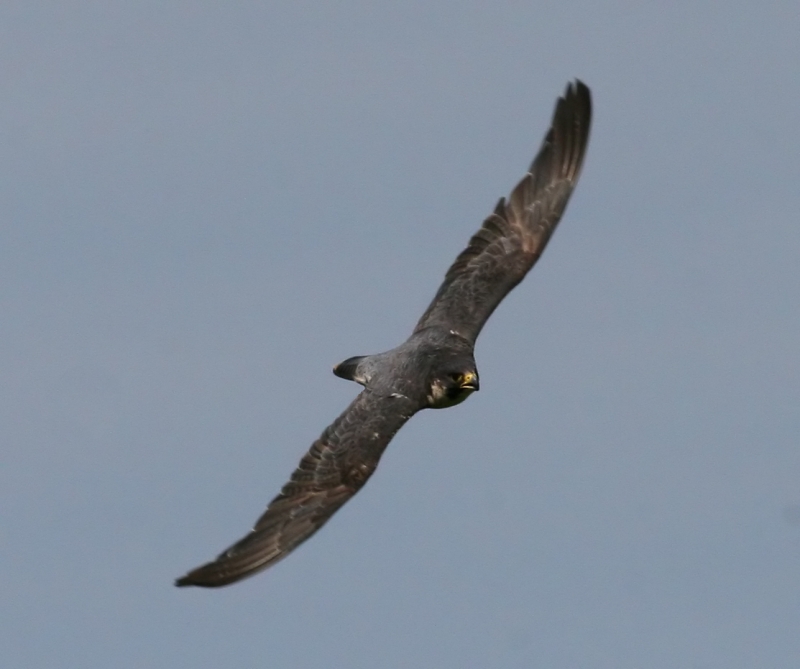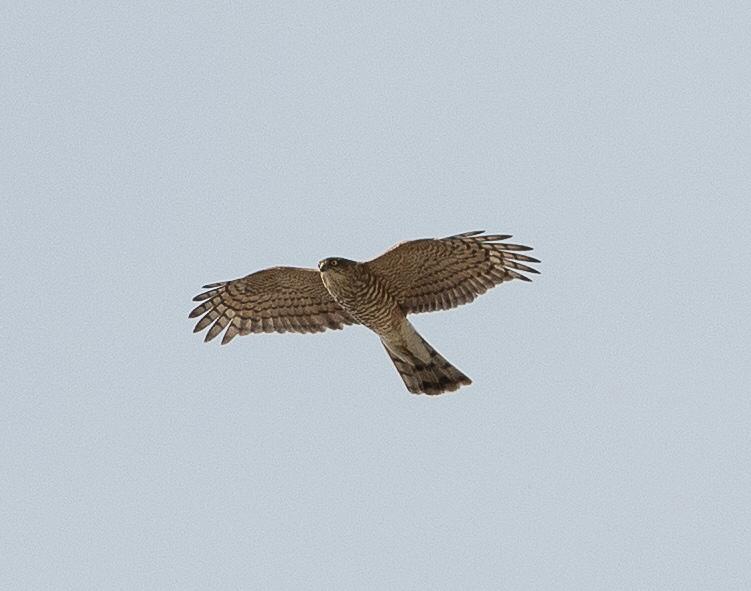Although the number of breeding pairs of peregrines was on the increase in the early part of this century it is still a rather rare bird to spot, unless you know where to look, because they are usually perched high and or remotely or flying high or quickly above. Hopefully, this quick guide will help you identify peregrines from the UK’s other raptors:
The peregrine falcon is the largest of the resident UK falcons. It has strong, pointed wings of about 1 meter span, stockybody and a relatively short, fan-shaped, tail. With a grey bared back and a white and grey ribbed frontage. It has strong yellow talons and a hooked beak. As the vast majority of a peregrines’ diet consists of other birds it can be present across a number of habitats including cliffs, quarries, farmland, wetland, mountainous, rural and urban environments .
The best places to see peregrines are now in our cities as many breed on tall buildings – our urban cliffs. To identify a perched peregrine falcon look out for:

credit and copyright, Nick Martin, www.martinimages.co.uk 
credit and copyright, Nick Martin, www.martinimages.co.uk 
Photo credit © Wikipedia Commons
- Stocky silhouette
- Grey back
- White and grey steaked belly and underside
- Bright yellow talons
- Strong hooked beak
Peregrines can be seen flying across numerous different habitats. To identify a peregrine falcon in flight look out for:

Cromer 
Cardiff 
Scotland 
Photo credit Ian Butler Photography 

credit and copyright, Nick Martin, www.martinimages.co.uk
- Broad wings which come to a point
- Short tail – can be either fanned out or tucked in
- Aerodynamic position of the wings in stoop
Male (the tiercel) and female (the falcon) peregrines are sexual dimorphic. This means that they do have some different external characteristics and although it is not as obvious as in other bird species here are the key things to look out for:
- Males are approximately a third of the size of females
- Males have a more solid grey colouring on their back whilst the females have a more obvious black barring to their feathers
- Females have more defined vertical flecks at the top of their bib (like their neck) compared to the males
Juvenile Peregrines can be identified as they have more brown and cream plumage than the adults:

Norwich 
Wakefield 
Essex 
Nick Martin, www.martinimages.co.uk
The peregrine can often be mistaken with other raptors. Here are a few pics to help you differentiate:





